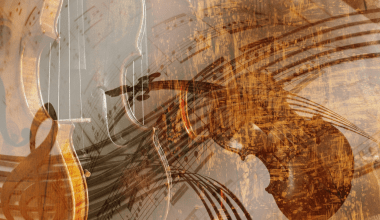If you’re an artist looking to grow your audience, you’ve likely asked yourself: how do I get my music on playlists? Playlists are the lifeblood of modern music discovery. They can take a track from obscurity to millions of streams, opening doors for artists like never before. The good news? You don’t need to be a major-label artist to get your music featured. With some strategy, persistence, and a little know-how, you can make it happen.
In this blog, we’ll walk you through everything you need to know about landing your tracks on playlists. From understanding the types of playlists to reaching out effectively, we’ve got you covered. So, let’s dive in!
Understanding Playlists and Why They Matter
Playlists are curated collections of songs, often centered around a theme, mood, or genre. They’ve become a central part of how people discover and enjoy music. Whether it’s a top Spotify playlist or a niche user-generated list, these platforms give your music a chance to reach new ears.
Why are playlists so powerful?
- They’re widely shared and followed.
- They provide social proof—“If it’s on this playlist, it must be good.”
- They’re often algorithmically tied to user recommendations.
Getting your track on the right playlist can mean the difference between a hundred and a hundred thousand streams. But first, you need to understand the different types of playlists and their unique dynamics.
Types of Playlists
Not all playlists are created equal. Here are the main categories:
1. Editorial Playlists
These are curated by the platform’s in-house team (e.g., Spotify’s editorial team). Examples include Today’s Top Hits and RapCaviar. Landing on one of these playlists can skyrocket your career, but competition is fierce.
2. Algorithmic Playlists
These are generated by algorithms based on listener data. Examples include Discover Weekly and Release Radar. While you can’t pitch directly to these, your streaming data influences whether your music gets included.
3. User-Generated Playlists
Created by individual users, these can range from small personal collections to widely followed lists. Targeting these playlists can be a fantastic stepping stone.
4. Brand and Influencer Playlists
Some brands and influencers curate playlists to engage their audience. These playlists can be highly niche but often attract dedicated followers.
Understanding these types will help you tailor your approach to get your music featured.
Preparing Your Music for Playlists
Before pitching your music, make sure your track is playlist-ready. Here are some essentials:
1. High-Quality Production
First impressions matter. If your track doesn’t sound professional, curators won’t take it seriously. Invest in mixing and mastering to ensure your song stands out sonically.
2. Engaging Cover Art
Eye-catching cover art makes your track more attractive, especially for user-generated playlists. It’s the first thing listeners see, so make it count.
3. Proper Metadata
Ensure your song’s metadata—like artist name, genre, and release date—is accurate. Mistakes here can lead to your music being overlooked or miscategorized.
4. Build a Fan Base
Curators are more likely to feature artists who already have some traction. Promote your music on social media, and encourage fans to save and share your tracks.
Pitching to Playlists
Now that your track is ready, it’s time to pitch. Here’s how:
1. Editorial Playlists
If you’re on Spotify for Artists, you can pitch your unreleased tracks directly to Spotify’s editorial team. Here’s what to include:
- A compelling description of your track.
- Its genre, mood, and any unique story behind it.
2. User-Generated Playlists
Search for playlists that align with your genre or mood. Reach out to curators with a personalized message. Be polite, concise, and explain why your track fits their playlist.
Platforms like Instagram and Twitter are great for connecting with curators. Follow them, engage with their posts, and build a genuine relationship before pitching your music.
4. Use Playlist Submission Tools
Services like SubmitHub and PlaylistPush can help you pitch your tracks to a wide range of curators. While some are paid, they can be worth the investment if used wisely.
Building Long-Term Relationships
Getting your music on a playlist isn’t just about the initial pitch. Building and maintaining relationships with curators can lead to recurring features. Here’s how:
- Show gratitude. Always thank curators for featuring your music.
- Stay in touch. Share updates about your music and let them know about new releases.
- Provide value. Share their playlists with your audience, helping them grow their following too.
Maximizing Playlist Success
Once your music is on a playlist, the work isn’t over. Here’s how to maximize its impact:
- Promote the playlist. Share it across your social media channels and encourage fans to follow and stream it.
- Engage listeners. Reply to comments and messages from new fans who discover your music.
- Analyze data. Use analytics tools to track how your music is performing on playlists and refine your strategy.
Final Thoughts
Getting your music on playlists takes effort, but the rewards are worth it. By following the steps outlined in this guide, you’ll increase your chances of getting noticed and growing your audience. Remember, persistence and professionalism are key. So, start preparing your tracks, pitch confidently, and watch your music reach new heights.
For further reading, explore these related articles:
- The Evolution and Vibrance of the Indian Music Industry
- Zee Music Company Owner: Shaping the Sound of India
For additional resources on music marketing and distribution, visit DMT Records Private Limited.






